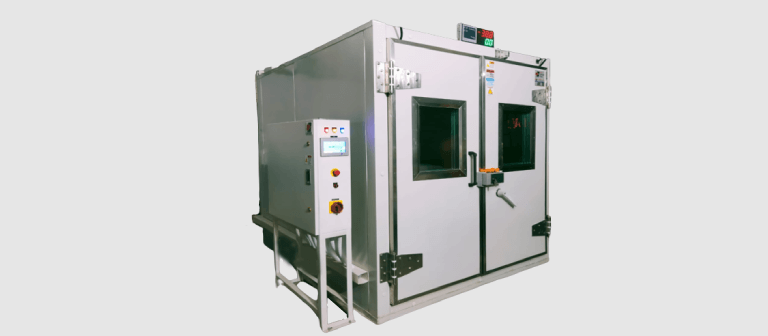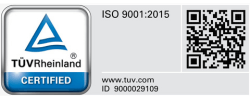Changes in the attenuation of optical fibre cables which may occur with changing temperatures are generally the result of buckling or tensioning of the fibres.
Resulting from differences between their thermal expansion coefficient and the coefficients of the cable strength and jacketing members. Test conditions for temperature-dependent measurements shall simulate the worst conditions.

This test will be used either for monitoring cable behaviour in the temperature range which may occur during storage, transportation and usage or to check, in a selected temperature range (usually wider than that required for the above-mentioned case), the stability behaviour of the attenuation connected to a substantially micro bend-free situation of the fibre within the cable structure.
Features as below
- Large glass window design, viewing angle in all directions, hollow electric plating film and anti-condensation design, built-in lights to facilitate the test sample state of real-time observation in the course of testing.
- Heat preservation material used glass fiber cotton of high-intensity PU foam and high density, which can avoid unnecessary energy loss.
- Large-size LED /LCD display screen, simple operation, easy to edit programs. PID with automatic calculation function, show failure message.
- Material quality of inner body MOC is stainless steel 304 grade, mirror-face stainless steel, and outer body MOC is Galvanised steel (GI) with electrostatic powder coated. RS-232 communication interface, matching recorder.
- With timing contact, and able to cope with dynamic testing and measure test.
- The system-wide multi-security protection and power-cut memory.
- Compressor and environmental-friendly refrigerant (R134a, R404a, R23).
- Refrigeration system uses units or low-temperature dual-loop system design.
- Uses more powerful wing-blower air supply cycle, to avoid any dead end, temperature and humidity are evenly distributed in the test region.
- Wind-road cycle adopted the design of blowing side wind and return wind. Wind pressure and wind speed are in accordance with test standards.
- Heating, cooling, humidification and de-humidification system is totally unaided to improve efficiency, reduces testing cost, increases life expectancy and lower failure rate.
Main Technical Parameters
- Capacity of Thermal Chambers: 500 Litres to 25000 Litres.
- Temperature Range: -400 C to +1000 C.
- Humidity Range: 10% to 95%.
- Temperature Raising /Fall Rate: 1 to 50 C.
- Temperature Accuracy: ±0.5°C.
- Temperature Gradient: ±2°C.



Leave a Reply